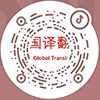Specific Solutions
How Are Rush Translation Services Priced?
— Understanding the Value Behind Urgency
Rush translation—also known as expedited or urgent translation—is one of the most frequent requests in the language services industry. Clients often need last-minute translations for meetings, legal filings, visa applications, tenders, media releases, or unexpected schedule changes.
One of the most common questions is:
"How is rush translation charged?"
The answer isn’t just about counting words. Instead, it reflects a careful balance of time, coordination, and professional responsibility.
I. What Qualifies as a Rush Translation?
A translation project is typically considered “rush” when the requested turnaround time is significantly shorter than the standard delivery timeline.
For example:
A document that would normally require 2–3 business days is requested within a few hours or overnight
The required daily output exceeds a translator’s normal working capacity
The project requires completion during evenings, weekends, or holidays
Such jobs require accelerated coordination, flexible staffing, and a faster quality assurance cycle—which all contribute to how pricing is structured.
II. What Does Rush Translation Really Cost?
While translation is often priced by word or character count, rush translation reflects additional service layers that go beyond basic text conversion:
1. Urgent Human Resource Coordination
Fast delivery usually requires reshuffling existing workloads, assigning multiple translators, and engaging editors and project managers at short notice. This immediate response carries real operational costs.
2. Work Outside Regular Hours
If a project is submitted late in the day and required the next morning, it may involve night work or weekend effort—and translation providers must compensate linguists accordingly.
3. Higher Delivery Risk
Tight deadlines leave less room for review or revisions. To maintain quality, the team must compress the review cycle and intensify quality control under pressure. This means greater responsibility and tighter supervision.
4. Quality Still Matters
The goal is never “just fast”—it’s fast and professional. A reliable agency ensures that even under time constraints, translations remain accurate, polished, and client-ready.
III. Why Do Rush Fees Vary Between Projects?
Not all rush jobs are created equal. Pricing is often influenced by:
Language pair availability: Less common languages may be harder to staff on short notice
Document complexity: Legal, medical, or technical content requires specialist knowledge
Formatting requirements: Files with tables, images, scanned text, or complex layouts may require more time
Post-editing or native review: If the client requests native speaker editing or final formatting, the rush fee may reflect that additional step
In short, the tighter the deadline, and the more complex the task, the greater the service effort—and the corresponding cost.
IV. How Can Clients Optimize Rush Projects?
To ensure a smooth process even under tight timelines, clients are encouraged to:
Communicate urgency early to allow time for scheduling
Provide clear, editable source files (e.g., Word instead of scanned PDF)
Specify whether partial delivery is acceptable (e.g., key sections first)
Confirm requirements up front: target audience, tone, formatting, file type, etc.
Trust the process: allow the translation team to advise on feasibility and quality management
Effective communication can reduce friction and increase delivery efficiency on both sides.
V. Final Thoughts: Rush Means More Than Speed
Rush translation isn’t just about urgency. It’s about the ability to deliver quality under pressure. The pricing reflects not only faster turnaround, but human coordination, reliability, and professional assurance.
In that sense, you’re not just paying for speed—you’re investing in responsiveness, precision, and peace of mind.


















